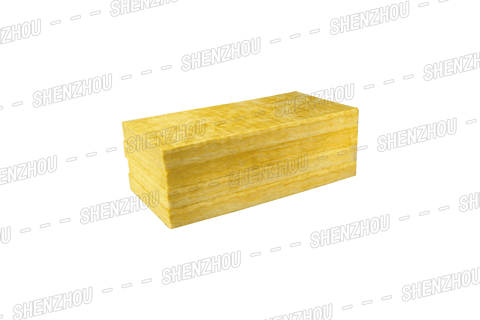
Which one has better insulation performance, glass wool roll felt or rock wool
5/30/20245 min read

In building insulation materials, glass wool felt and rock wool are common choices, each with unique performance and advantages. However, when we focus on insulation performance, which material is more outstanding? This article will provide a detailed comparison of the insulation performance of glass wool roll felt and rock wool, in order to provide valuable references for readers when choosing insulation materials.
Categories
Popular
Applications of Glass Wool Board:
Interior Wall Compartments:
Enhances the functionality and aesthetics of interior spaces.
Ceiling Systems:
Provides effective insulation for ceilings, contributing to energy efficiency.
Insulation of Iron Sheet Air Ducts or Bellows:
Ideal for insulating ductwork, ensuring thermal efficiency.
Sound Absorption and Noise Reduction:
Reduces noise levels in machine rooms, creating a quieter working environment.
Exterior Wall Insulation:
Offers insulation for residential building exteriors, contributing to energy savings.
Glass Wool Insulation





Firstly, let's take a look at glass wool felt rolls. Glass wool felt is an insulation material made of glass fiber, which is widely used in the construction field due to its excellent insulation performance. It has a lower thermal conductivity, which can effectively reduce heat conduction and provide excellent insulation effect. In addition, the fiber structure of glass wool felt is tight and soft, which makes it more convenient during construction and can effectively reduce the transfer of heat and sound. Therefore, glass wool felt has been widely used in building insulation, sound insulation, fire prevention, and other aspects.
Next, we turn to rock wool. Rock wool is an inorganic insulation material made by melting natural rocks, and its insulation performance is also excellent. Rock wool has high compressive and tensile strength, as well as good high-temperature resistance, which enables it to maintain stable insulation effects in various environments. In addition, although the fiber structure of rock wool is hard and brittle, proper operation methods can avoid damage during construction, thereby ensuring its insulation performance.
When comparing the insulation performance of glass wool roll felt and rock wool, we need to pay attention to their thermal conductivity. Thermal conductivity is a key indicator for measuring the insulation performance of materials, which determines the ability of materials to transfer heat under temperature difference. In this regard, both glass wool felt and rock wool have lower thermal conductivity, which can effectively reduce heat transfer. However, due to the different material composition and fiber structure of the two, their specific thermal conductivity values may vary. In practical applications, it is necessary to select the most suitable insulation material based on specific engineering requirements and environmental conditions.
In addition to thermal conductivity, we also need to consider the thermal resistance value of insulation materials. The thermal resistance value is another important indicator to measure the ability of a material to prevent heat transfer. Glass wool felt and rock wool both have high thermal resistance values, which can reduce heat transfer to a certain extent. This means that they can all achieve a high level of insulation performance, but in specific application scenarios, suitable materials need to be selected according to actual needs.
In addition, the durability of insulation materials is also one of the factors we need to consider. In building insulation engineering, insulation materials need to withstand various environmental factors for a long time, such as temperature changes, humidity changes, etc. Therefore, the durability of insulation materials is directly related to the stability of their long-term insulation performance. In this regard, rock wool exhibits excellent high-temperature resistance and chemical stability, while glass wool felt also has a longer service life and stable insulation performance.
In summary, both glass wool roll felt and rock wool have excellent insulation performance. They all have lower thermal conductivity and higher thermal resistance, which can effectively reduce heat transfer and provide excellent insulation effect. In practical applications, we can choose the most suitable insulation material based on specific engineering requirements and environmental conditions. Whether it's glass wool felt or rock wool, they are excellent choices in the field of building insulation, providing long-lasting insulation performance for our buildings, improving energy efficiency, and reducing energy consumption.

Why Choose SHENZHOU Glass Wool Board?
SHENZHOU® Glass Wool Board not only meets the essential requirements of thermal insulation but also excels in sound absorption and noise reduction. Its adaptability to various settings, coupled with the convenience of construction and installation, positions it as a leading choice for architects, builders, and contractors.
In conclusion, the broad application prospects of SHENZHOU® Glass Wool Board make it a comprehensive solution for enhancing comfort, energy efficiency, and acoustic performance across diverse projects. Choose SHENZHOU® for insulation solutions that go beyond expectations.










About Us
Click the button below to get more information about us
Newsletter
Click to subscribe for more information
Follow Us
Contact Us
Address
Dacheng town, Langfang City, Hebei province, China
Phone
+86 185 03165 626


